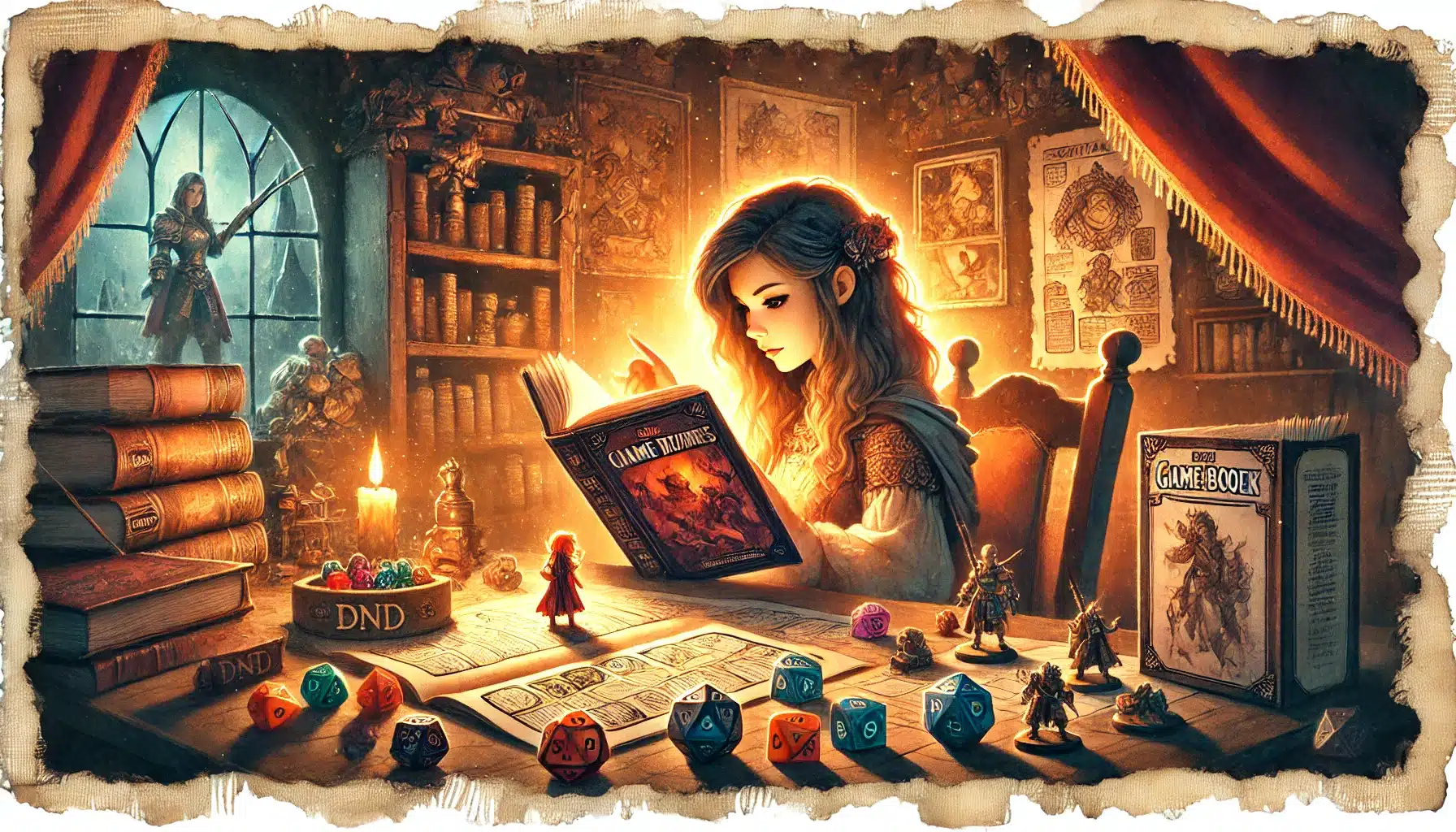In the vast world of Dungeons & Dragons (D&D), a tapestry of languages weaves through every campaign setting, enhancing character depth and adding layers to interaction. While all characters speak Common—a lingua franca understood by almost all creatures—choosing additional languages brings uniqueness and flair to your character, helping you shape their backstory and identity. A character’s languages stem from their race, class, or background, reflecting personal history or regional ties. Moreover, knowing the right language can prove to be strategically advantageous, especially in diverse, multicultural worlds or plane-hopping adventures. This guide delves into the variety of languages available in D&D, helping players carefully select the languages that best suit their characters and the storylines they wish to explore.
Languages in D&D not only serve as a conduit for communication but also as a storytelling device. They establish connections between characters and the multitude of cultures and civilizations they encounter. When your campaign spans different realms or ancient lands, your character’s choice of language becomes even more crucial. Not only can it open up avenues for exciting interactions with NPCs, but it can also influence the unfolding narrative in surprising ways. Thus, whether you’re selecting a language to adhere closely to a character’s lore or exploiting a strategic edge in campaign interactions, the importance of languages in D&D should never be underestimated.
This guide explores all known D&D languages comprehensively, covering how various languages can be used to enhance gameplay. By understanding the intricacies of each language, players can choose options that not only fit their characters’ immediate needs but also enrich the overall storytelling experience. Let’s embark on a journey through the languages of D&D, empowering you to make informed decisions as you craft and deepen your character’s narrative.
How Many DnD Languages Are There?
In Dungeons & Dragons 5th Edition (5e), an array of languages provides diverse options for character customization, broadly categorized into Standard and Rare languages. Understanding the distinction between these two categories can guide players in making impactful language selections for their characters.
Standard languages form the foundation of communication in most campaigns, commonly spoken by player characters (PCs) and non-player characters (NPCs) alike. They align closely with various races and regions, making them practical choices that facilitate interaction in diverse settings. On the other hand, Rare languages are intricately tied to specific creatures, ancient civilizations, or even otherworldly planes of existence. These languages often become especially valuable in niche campaigns or for characters with unique and exotic backgrounds.
The diversity in language options, both Standard and Rare, ensures that players can tailor a character’s linguistic repertoire to fit the campaign’s specific needs or their own narrative aspirations. Some languages provide general utility across different gameplay scenarios, while others offer unique interactions tied to specialized plots, enhancing the depth and intrigue of your campaign world.
Try my AI Tabletop RPG generators...and an extensive library of content!
Standard DnD Languages
Standard languages in D&D are those most commonly known to characters and NPCs within the world. They’re usually tied to specific races and regions, making them applicable in many campaign settings, regardless of complexity or scope.
Table of Standard DnD Languages
This table lists each Standard language, together with the creatures or regions they are associated with and typical users.
- Common: Universally spoken across most civilized regions and towns, serving as the default language for many campaigns.
- Dwarvish: Traditionally used by dwarves, often found in dwarven kingdoms, inns, and trading posts.
- Elvish: The graceful language of elves, spoken in forest realms and regions where elves reside.
- Giant: The language of giants, often encountered in mountainous or remote locations.
- Gnomish: Used by gnomes in their hidden communities or cities.
- Goblin: Spoken by goblins and hobgoblins in tribal regions or lairs.
- Halfling: The tongue of halflings, common in their settlements and trade routes.
- Orc: Tribal orcs and those living in untamed lands use this language predominantly.
- Sylvan: Known as the language of nature, spoken by fey creatures and those living close to the magical woods.
Choosing one or more Standard languages allows characters to communicate broadly within many campaign settings, often enhancing social interaction and narrative development.
Rare DnD Languages
Rare languages hold niche roles, often tied to specific creatures, ancient civilizations, or otherworldly realms. Their utility shines in specialized campaigns, where understanding a Rare language might unlock secrets or confer advantages.
Table of Rare DnD Languages
This table lists Rare languages, outlining their origins, typical speakers, and potential benefits for players engaged in niche encounters.
- Abyssal: The demonic language of the abyss, used by demons and those who traffic with infernal forces.
- Celestial: The language of the celestial realm, spoken by angelic beings and celestial adventurers.
- Draconic: An ancient tongue known by dragons and certain scholars or magic users.
- Deep Speech: Used by aberrant creatures from the Underdark or extraplannar realms, scribed by powerful minds.
- Infernal: The heavily codified language of devils, known for legalistic precision and binding contracts.
- Primordial: A language of elemental beings, offering insight into ancient power and magical insight.
- Sylvan: The language of fey and supernatural creatures, common in mystical woods and enchanted glades.
- Undercommon: An amalgamated language found in the Underdark, aiding communication among its varied inhabitants.
By choosing a Rare language, characters can tap into plot points tied to ancient lore or otherworldly travel, revealing paths otherwise closed off in campaigns rife with mystery and exploration.
How to Learn DnD Languages
There are several avenues through which characters can learn additional languages in D&D, each tied to specific aspects of character creation and development.
Language acquisition often begins with race: most characters know the languages associated with their race from the outset. For instance, elves automatically speak Elvish, tying them to a broader cultural background right from character creation. This initial allocation reflects a character’s upbringing and heritage, grounding them in their respective race’s tradition.
⚔️ Fantasy RPG Random Tables Books
Make life as a Gamemaster easier…
If you play Dungeons & Dragons, Pathfinder, or other fantasy RPGs, this
RPG random tables series
is packed with encounters, NPCs, treasure, and more. Available in eBook or print—either way, you’ll have a wealth of adventure ideas at your fingertips.
Background also plays a significant role, with some granting extra languages to align with the character’s history or scholarly pursuits. For example, the Sage background allows characters to learn a scholarly language, reinforcing a narrative of study and exploration.
Certain class features offer opportunities to gain additional languages. Classes like the Bard or Rogue (with specific archetypes) can acquire languages through abilities or spells, reflecting their versatile nature and adaptability.
Other pathways to language acquisition include spells like Comprehend Languages or items such as a Helm of Comprehending Languages, offering practical solutions for overcoming language barriers adventurers might face during their journeys.
What Are the Best DnD Languages?
While players ultimately choose based on preference and campaign necessity, certain languages provide advantageous utility in common campaign settings.
Recommended Languages for Common Campaigns
Here are some of the most practical language choices for typical campaigns:
- Common and Draconic: Essential in any world featuring dragons or their lore, given dragons’ ancient wisdom and influence.
- Elvish and Dwarvish: Invaluable for campaigns focused on traditional fantasy races, often entwined in matters of trade, diplomacy, or alliance.
- Undercommon: Offers invaluable support for adventurers delving into the dark, intricate ecosystems of the Underdark.
Choosing the best language depends heavily on the campaign’s narrative focus and setting, allowing characters to navigate social nuances and overcome barriers with ease.
Other DnD Languages and Special Cases
Beyond Standard and Rare, certain languages exist that are connected to specific deities, magical creatures, or intense, lore-driven campaigns.
Special Language Types
- Primordial: Ideal for characters involved in campaigns centered around elemental planes, offering insights into elemental magic and guardian beings.
- Abyssal and Celestial: Perfect for campaigns with strong associations to infernal or celestial entities, whether as allies, foes, or narrative guides.
These special languages add significant narrative depth, particularly for characters intrinsically tied to certain elements or divine powers, enriching character backstories and interactions.
How Does Choosing a Character Race Influence the Language Options Available in DnD?
Selecting your ideal dnd race significantly affects the language options available to your character. Certain races, such as elves or dwarves, come with unique languages that reflect their rich cultural heritage. This diversity adds depth to gameplay, allowing for intriguing interactions and enhancing the storytelling experience within the campaign.
Role-Playing with Languages: Tips and Tricks
Languages go beyond mere communication, offering a tool for role-playing, fostering connections between characters and the game world.
Accents and dialects breathe life into language choices, allowing players to add flavorful phrases or mannerisms from their character’s heritage. This creativity extends into interactions, deepening the role-play experience for players and DMs alike.
Rare languages can serve as a secret code among characters, facilitating private conversations in public settings or permitting clandestine exchanges with trusted NPC allies.
Consider learning new languages in-game as part of your character’s development. This journey can involve mentorship, deciphering ancient texts, or magical means, providing role-play opportunities that enhance personal growth.
Incorporating diverse languages enriches campaigns with cultural nuances and historical narratives, providing a dynamic way to express creativity and drive world-building within gameplay.
By thoughtfully selecting and utilizing languages, players can significantly enhance their characters’ narrative and engagement within the D&D universe, forging memorable adventures and intricate story paths.










